Designing an Olympic medal is an art that skillfully blends tradition with innovation. Each Olympic Games tells a unique story, and the medals serve as a symbol of the athletes’ hard work and dedication. The journey from the initial concept to the final product is a testament to the host nation’s culture and the Olympic spirit. When learning how to design an Olympic medal, it’s essential to strike a careful balance between artistic creativity, technical precision, and cultural representation.
The Evolution of Olympic Medal Design
Olympic medal design has evolved significantly since the first modern Games in 1896. In the early years, medals were simpler, often featuring the image of Zeus or the Acropolis. However, as the Games grew in popularity, so did the complexity and creativity of the designs.
In recent decades, designers have focused on incorporating elements that represent the host city or country. For example, the medals for the 2008 Beijing Olympics featured a jade disk, a traditional Chinese symbol of honor. Similarly, the medals from the 2020 Tokyo Games included recycled materials from electronic devices, emphasizing sustainability.
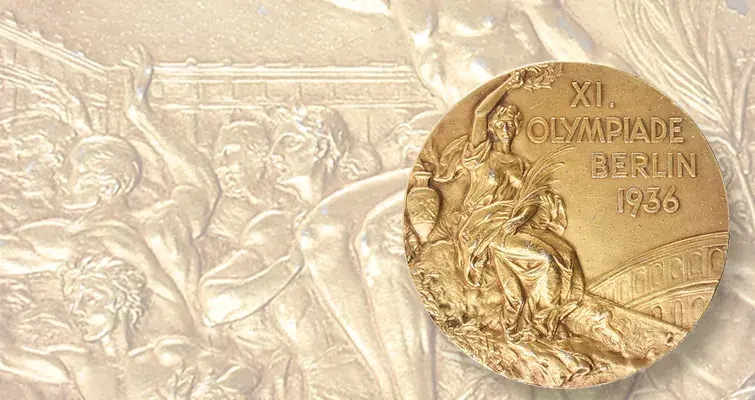
History of Olympic Medal Design
Designing Olympic medals is an art that blends tradition with innovation. Every Olympic Games has a unique story, and the medals symbolize the hard work and dedication of the athletes who compete. From the initial concept to the final product, the process of creating these prestigious event medals reflects both the host nation’s culture and the Olympic spirit. Let’s explore the medal design concepts and elements of each Olympic Games since the start of the 21st century.
Sydney 2000 Olympic Medals
The turn of the millennium marked the beginning of a new era for the Olympic medals. The Sydney 2000 Olympics celebrated the fusion of history and modernity. The medal design incorporated traditional Greek motifs with contemporary Australian elements.
The front of the medal featured Nike, the Greek goddess of victory, holding a laurel wreath, while the reverse side displayed the Sydney Opera House with the Olympic rings. The use of the Opera House symbolized the host city, and the ribbons were designed with colors reflecting the Australian landscape.
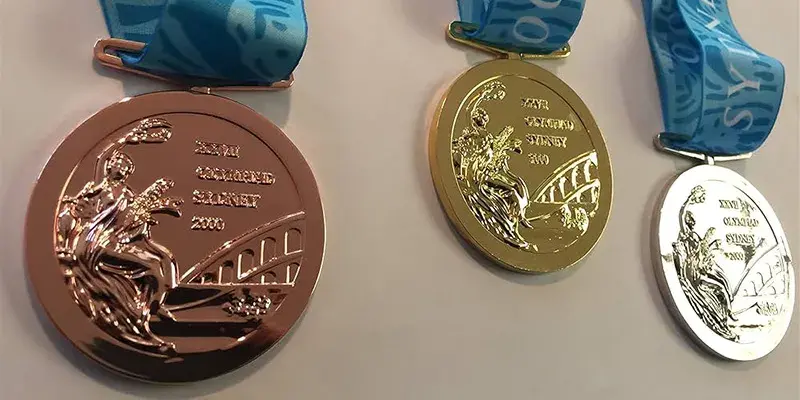
Athens 2004 Olympic Medals
Returning to the birthplace of the Olympics, the Athens 2004 Games presented a unique opportunity to pay homage to the rich history of the Olympic movement. The medal design took inspiration from ancient Greece while incorporating modern elements to celebrate the continuation of the Games.
Athens 2004 sought to reflect the deep connection between the ancient origins of the Olympics and their modern reincarnation. The design was deeply rooted in classical Greek art and architecture. The medals featured a modern depiction of Nike flying into the Panathenaic Stadium, where the first modern Games were held in 1896. The reverse side displayed the eternal flame of the Olympic Games, a symbol of the continuity of the Olympic spirit. The medal ribbons were adorned with olive branches, representing peace and victory.
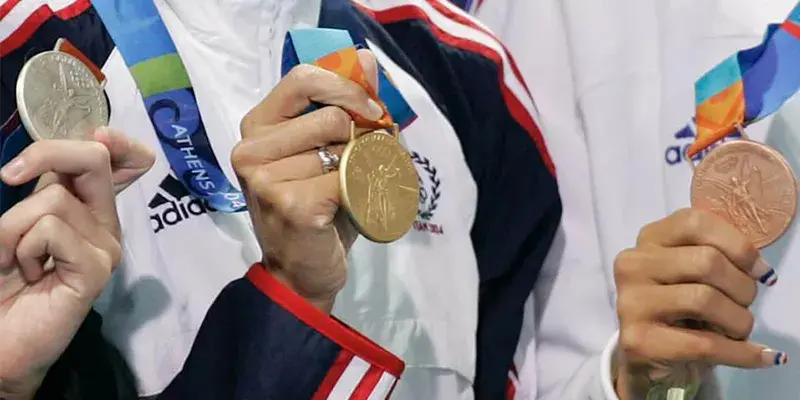
Beijing 2008 Olympic Medals
The Beijing 2008 Olympics represented China’s emergence on the global stage. The medal design for these Games was a blend of ancient Chinese culture and modern innovation, reflecting the host country’s rich heritage and future aspirations.
Beijing’s 2008 medals incorporated elements of traditional Chinese culture. The medals were inspired by the concept of jade, a material highly valued in Chinese culture. The front featured the standard image of Nike, while the reverse showcased a jade disk, a symbol of honor and virtue in Chinese culture. This design was a tribute to China’s ancient civilization. The medals were made from a blend of gold, silver, bronze, and jade, and the ribbons incorporated the lucky color red, signifying good fortune and happiness in Chinese tradition.
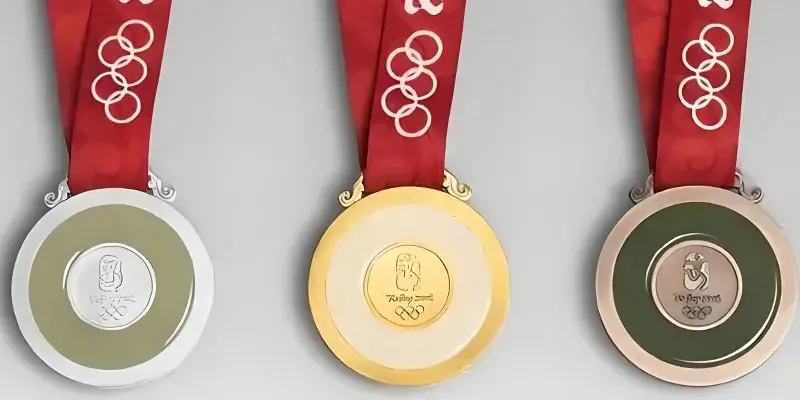
London 2012 Olympic Medals
The London 2012 medals were among the largest and heaviest in Olympic history. Designed by artist David Watkins, conceptualized to represent the meeting of athletes from all over the world. The medals featured the image of Nike on the front and a symbolic design on the back representing the River Thames, a prominent symbol of London. The ribbon design incorporated purple, a color often associated with royalty and prestige, reflecting London’s historical significance.
London 2012 sought to create Olympic medals that were modern and dynamic, reflecting the energy and vibrancy of the host city. The design was a bold departure from traditional motifs, embracing contemporary design principles.
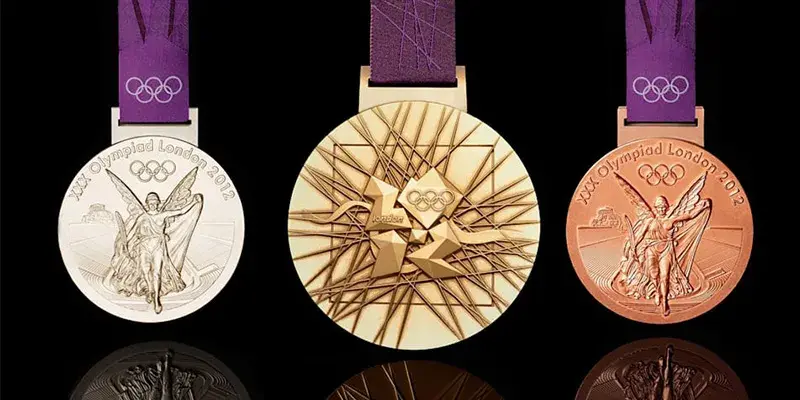
Rio 2016 Olympic Medals
Rio’s 2016 Olympics brought a unique blend of natural beauty and cultural vibrancy to the medal design. Sustainability was a key focus for the Rio 2016 Olympic medals. The medals were inspired by Brazil’s lush landscapes and diverse ecosystems. The design aimed to celebrate the natural beauty of the host country while promoting sustainability. This commitment to sustainability is a reflection of the growing global concern for the environment and the role of major events like the Olympics in promoting responsible practices.
The medals reflected Brazil’s commitment to environmental conservation. The medals were made from sustainable materials, with the gold medals free of mercury and the silver and bronze medals containing 30% recycled materials. The front of the medals depicted the traditional image of Nike, while the reverse showcased the Rio 2016 logo surrounded by laurel leaves. The ribbons were made from 50% recycled PET plastic and featured vibrant colors inspired by the tropical landscape of Brazil.
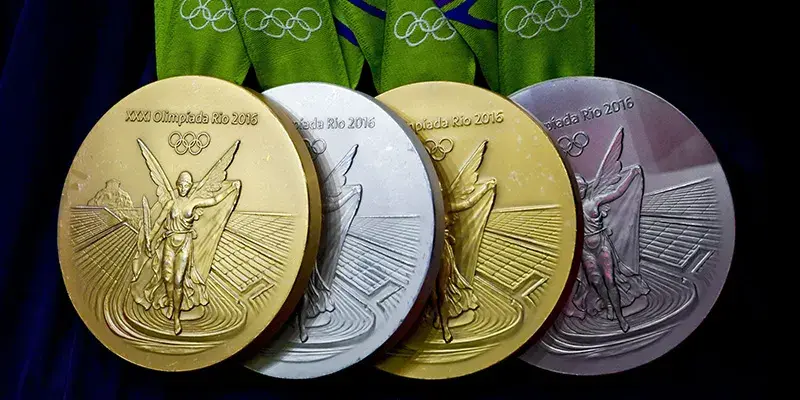
Tokyo 2020 Olympic Medals
The Tokyo 2020 Olympics faced unprecedented challenges due to the global pandemic, yet the medal design for these Games was a symbol of resilience and innovation. The design embodied a blend of traditional Japanese craftsmanship and cutting-edge technology. The medals were designed to represent the unity and diversity of the global community.
Tokyo 2020 set a new standard in medal design by using recycled materials from electronic devices. The medals, designed by Junichi Kawanishi, which concept focused on the idea of shining light on athletes’ achievements, symbolizing hope and determination. They featured the image of Nike on the front and a design on the back, representing the themes of unity and diversity. The medal ribbons were also made from recycled plastic, reflecting Japan’s commitment to sustainability and innovation. The ribbons featured traditional Japanese patterns, adding a cultural touch to the overall design.
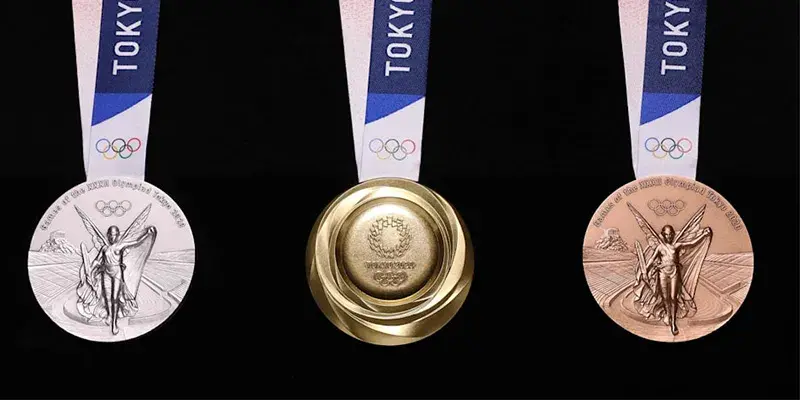
Key Elements of Event Medals
When designing medals for the Olympics, several key elements must be considered. First, the materials used play a significant role. Traditionally, Olympic medals are made from gold, silver, and bronze, but the actual composition may vary. For instance, gold medals are typically gold-plated rather than solid gold.
In addition to the materials, the imagery on the medals is crucial. Designers often incorporate symbols or motifs that reflect the culture, history, or natural beauty of the host nation. These designs are meticulously crafted to ensure they capture the essence of the Olympic Games and the spirit of competition.
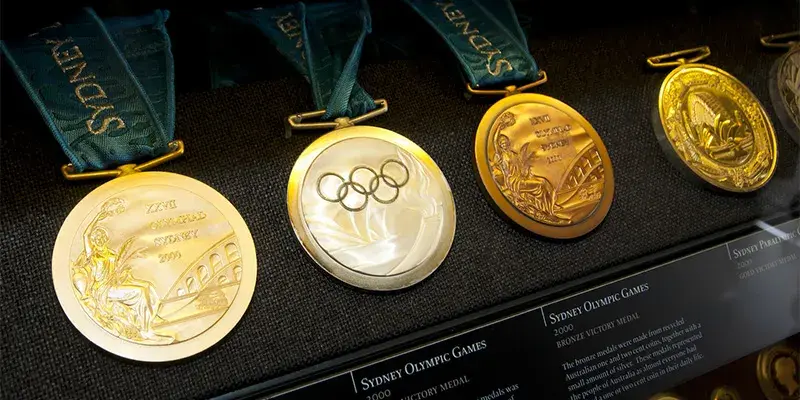
The Importance of Medal Ribbons
Medal ribbons are another essential aspect of Olympic medal design. These ribbons not only hold the medals around the winners’ necks but also add a touch of color and symbolism to the award. The design of the ribbon often complements the medal, incorporating similar themes or colors that represent the host country.
For example, the ribbons for the London 2012 Olympics featured the iconic purple color, a hue often associated with royalty and prestige. The ribbon design must also be functional, durable, and comfortable for athletes to wear during the medal ceremonies.
Designing for the Future
As we look to the future of Olympic medal design, sustainability, and innovation are likely to remain at the forefront. Designers are increasingly exploring new materials and techniques that reduce the environmental impact of producing these medals. For instance, the Tokyo 2020 medals set a new standard by using recycled electronics, an approach that could become more common in future Games.
Moreover, there is a growing trend toward personalization in medal design. Future medals might incorporate customizable elements, allowing athletes to have a say in the final product. This shift would not only enhance the value of the medals but also strengthen the connection between the athlete and the achievement.
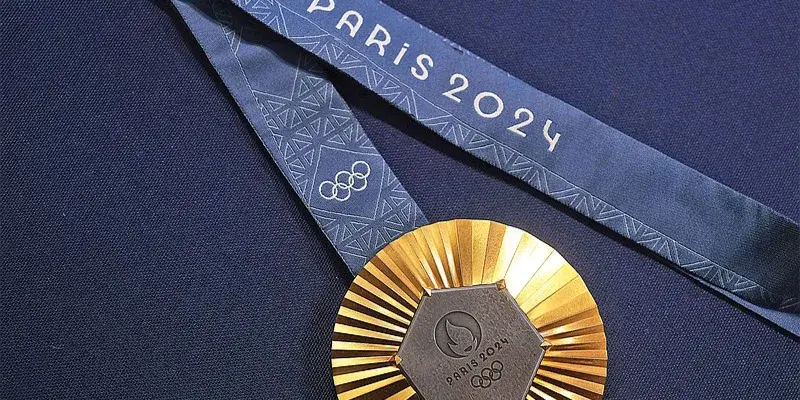
Conclusion
Designing Olympic medals is more than just creating a beautiful piece of metal; it’s about telling a story and honoring the athletes who dedicate their lives to their sport. As the Olympics continue to evolve, so too will the art of medal design, ensuring that each set of event medals remains a cherished symbol of achievement, pride, and the enduring Olympic spirit.
